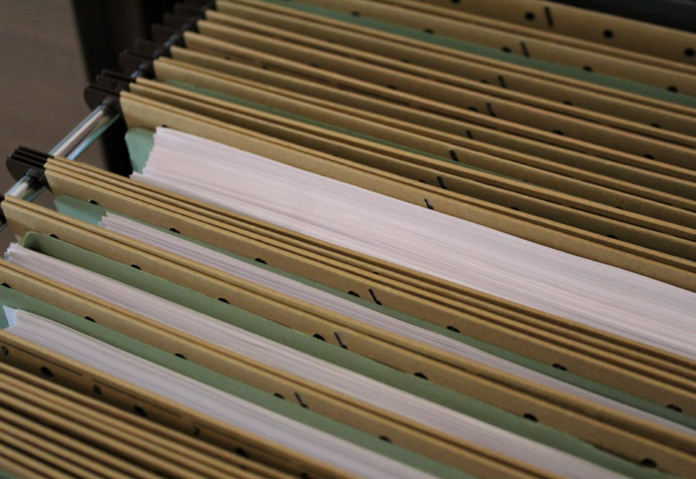About half of office professionals spend more time searching for documents than doing productive work. The majority of professionals call document search and retrieval one of their top problems.
For legal professionals, this is a sign of inefficiency. Document management is one of the main key performance indicators because time is money.
You could end up missing a court filing deadline or run late to an important client meeting because you couldn’t find documents in advance.
What you need is a legal filing system that lets you find your files easily. You’ll be able to gather legal documents and save time.
Read on to discover how you can create a legal filing system so you don’t have to deal with misplaced papers anymore.
Declutter Files and Separate Files
Your first step is to go through your files. You may have boxes that are stacked up to the ceiling with papers.
Pull them down and go through them all. Separate them into folders by client, which you’ll organize later into subfolders.
This will give you a rough idea of what you have. Do the same for electronic files as well.
Have a Shredding Party
If you’ve been practicing law long enough, you probably have a storage closet full of old client paperwork. You may be able to part with some of those documents.
Your jurisdiction tells you how long you have to maintain client records once a case gets closed. Some states require that you hang onto files for seven or eight years, while others require that you hold them indefinitely.
If you do have files you can dispose of, do so responsibly. Have them professionally shredded by a company that specializes in legal documents.
This gives you a chance to create a document retention policy. It outlines how client files get managed, stored, and disposed of.
Establish Electronic and Hard Copy Filing Protocols
Organizing court filings and legal documents rely on a repeatable system. Treat your legal filing system as a hierarchy, starting with your main client file.
This can be as simple as having an accordion file for each client. Within the accordion file are different categories. Examples of categories are contact information, billing and invoicing, discovery and exhibits, legal research, witness testimony, expert witnesses, office memos, and to-dos.
You can do the same with an electronic filing system. You’ll have the main file for each client. You’ll then have subfolders that cover these same areas.
Keep an empty folder with relevant subfolders as a template. When you receive a new client, you just have to copy and paste the folder structure and rename it.
It saves time and ensures that you have a consistent system for each and every client.
Use Naming Conventions
If you want to find your files easily on your computer, use naming conventions. These are folder names that you create to make organizing legal documents easy.
For instance, you can start with the client’s name and file number. For each subfolder, organize them alphabetically.
Each file should have a name and a date. That should give you enough information to know what the file is without opening it. Use YYYY-MM-DD as the date structure. Your files will get organized in chronological order.
If you have a lot of old files that need to get renamed, delegate it to an assistant to do the work. You can turn your attention to creating new files for current and new clients.
Always Keep Backup Copies
Anything can happen with technology and you can’t control it. A hard drive could fail or your computer could crash. A security breach is another possibility.
Protect your law practice and your clients by maintaining backups of your digital documents. Store them on the cloud and on an external hard drive.
Tips for Organizing Court Filings
Are you preparing for a big court date? Here are a few things you can do to organize your legal documents, whether you attend virtually or in person.
An in-person court date requires printed copies of all relevant files. Organize them by categories, such as the application form, affidavits and exhibits, original copies of documents, and financial information as it pertains to the case.
If you have multiple documents per category, organize them by date, with the oldest at the top and the most recent at the bottom.
For things like exhibits, file them separately in folders. Use more legal exhibit tabs to organize the exhibits so you can see them and pull them out when needed.
You can organize the categories so it works for you. For example, you can organize the categories based on what you’ll need first, second, and third, during the proceeding.
If you have a huge stack of documents, create a trial book. That prevents a folder from going missing. You don’t want to drop papers on your way to court and have them go all over.
How can you prepare for a virtual court session? You can submit both paper and digital copies to the court. It’s good practice to be prepared with both in case the judge asks for either one.
If you use the tips above, organizing court filings should be easy. Misplaced papers and legal documents will be a thing of the past.
Impress Clients With Your Legal Filing System
Organizing court filings and other legal documents can be such a struggle because there is so much paperwork for every client. You don’t have to worry about that because now you have a legal filing system that works for your law practice.
It takes time to implement and go through past files. Once you do and you have a plan for your documents, you’ll be able to create an efficient and profitable law firm.
Would you like more tips to handle the business side of your practice? Check out the blog for more helpful insights today.










